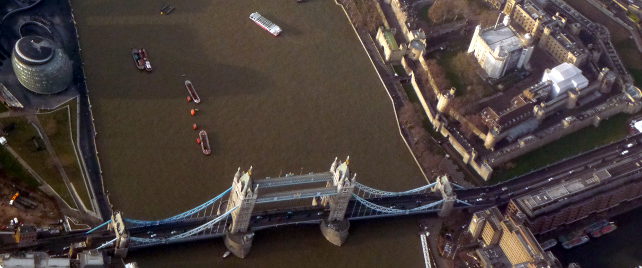Someone really should set up a museum of museums. Y’know, a sort of look through the ages (or at least since the 17th Century, when wikipedia would have you believe musea started to pop up) at the different ways in which humans have elected to catalog and display their antiquities. Not that it’s obvious how you’d mount an exhibition depicting going from private collections, all the way through to the interactive all-singing, all-dancing innovations which we currently queue up for at half-term week if we’ve been foolish enough to time our visit poorly.
Specifically, I was fascinated recently by a visit to the Bristol Museum & Art Gallery. After we’d negotiated our way through the exhibition entitled “Flight – 100 years of the Bristol Aeroplane Company”, and found it a little underwhelming and poorly structured (harsh comment – I’m sure that I’d be hard pressed to assemble a museum exhibition, so I’m sure it was a laudable effort… we just didn’t enjoy it that much). The Egyptian room was engaging, captivating, and instilled a sense of wonderment in us. So that was good. Moving on, there was the rock & mineral display where I suddenly realised that I’m 34 years old. By that I don’t mean that I had a sense of my own mortal insignificance next to the ancient display of rocks around me which probably took thousands and thousands of years to form under great pressure and heat – I mean that I realised that all the time I was a kid and ever saw Dads pottering around rock displays looking interested they were probably thinking, as I was, “Hmmm… Strontionate… strontionate… that’s… don’t tell me… yes, that’s a carbonate… used to extract Strontium from… that’s an element… is this one igneous?… that’s the volcano one, isn’t it… hmm… oh look, that’s Pyrite… doesn’t fool me… ho ho ho… Now, Coprolite… Coprolite… where’s that then… oh wait, that’s dinosaur shit.”. Etcetera. Essentially, desperately trying to fool oneself that one remembers anything from high school, when before even beginning to go through with the facade one has already internally admitted that it’s a topic area in which one was peripherally interested, at best.
In the next room however was something which was altogether more fascinating – the Taxidermy room.
Looking around there were a good number of glass cases with quite well-preserved specimens of various bird and animal families or examples. I’m no expert on taxidermy, but judging by the posture of the animals presented, the vibrancy of the colours, and the fact that they were standing there in pristine condition despite having been prepared quite some time in the past (as referenced by the signs nearby), it appeared that the taxidermist(s) involved had done a very good job indeed.
As a matter of fact the only up close and personal experience with taxidermy I’ve ever had was on the way home from an office Christmas party, encountering a girl with a case of beer under one arm and a taxidermied (is that the term?) duck under the other. She was good enough to share one of her beers with me (far from a necessary move at that time of the day), and as such I felt it uncouth to comment on the somewhat ragged state of her mallard. Apparently she’d found it in the basement at her office and decided that it’s what her next Christmas party that evening required.

None of the stuffed animals in this room showed any similarsuch signs of misappropriation or mispurposement (although there’s probably a retired colonel somewhere who has an anecdote about the time that he, Randolph and Timothy absconded with a stuffed ostrich from the Bristol collection, etc.).
So the thing I actually found intriguing about the whole arrangement was that this exhibit was a tangible display of the way that our attitude towards studying animals has moved on since Victorian times. In that Empire-building age, it seemed that it was very much the measure of a man’s prowess that he had an extensive collection of excellent specimens for show, and extending on this early biologists would go to great lengths to collect samples of one of each species of animal for ostensibly noble purposes – for study and learning.
You can imagine the conversation:
“Gadzooks, Tarquin, is that a Lesser Spotted Anvil-arsed Tree-climbing Desert Trout Bird?”
“Well spank me twice and call me Susan, Clive – I think it might be… Let’s go have a closer look!”
BLAM!
“Hmm… no, no, turns out it wasn’t.”
Of course since those heady days of progress our attitudes have moved on a bit (at least, in the scientific field) – presumably catalysed by the fact that during this period of progress the human race wiped out so many species (or indirectly did so via the introduction of domestic European animals to foreign habitats). As if to really grind that point in, the door that we entered the collection through had a stuffed Dodo in a case as the first thing you saw.
I must admit, after having seen so many of the environmentally conscious and low-impact ways that zoos and museums do things nowadays (which, I hasten to add, it utterly commendable and a Good Thing all-round), it was quite amusing to see the way that things USED to be done. For instance, in the “civilised western world” you’d be unlikely to ever see a display like this:
There’s no point pretending that the Bengal Tiger in this case was either terrified or just plain pissed off when it was “collected”. However the bit that made me giggle, based on today’s low-impact modes and awareness of the fragility of continuation of species, was the caption at the top-right of the case:
Triumph. Progress. Might.
Incidentally, having looked at Wikipedia, I’d suggest that the King George I referred to here was George I of Greece, as not only did George I of Great Britain die in 1727, but George I of Greece had an utterly appropriate moustache for the sort of person that probably enjoys a spot of tiger shooting.
The thing is, even though it’s a bit disturbing to see a tiger stuffed and mounted in a case like this – especially in light of the fact that estimates put the total current population of Bengal Tigers at around 1400 (irrelevantly, about the same as the number of people living on Christmas Island) – you can’t be too dismissive of old King George, because more than likely back in those days it was very much the done thing to set off in groups in search of large carnivorous animals and then kill them before they ate you, without care for how many were left. They all sort of lived in the foresty-thing, didn’t they? Bound to be more in there somewhere. It’s the great dichotomy of the Victorians – so forward thinking, so much scientific and technological progress, but so little regard for safety and conservation.
Anyway, in a later case I was intrigued to spot a large green parrot that I immediately recognised.
I was surprised to see that the collection had a Kakapo. One of my favourite books during high school was the Douglas Adams wildlife chronicle with zoologist Mark Carwardine), Last Chance To See (latterly revisited with Stephen Fry and turned into a BBC series). The Kakapo was a large native flightless bird of New Zealand, which pretty well didn’t stand a chance when European housecats and rats arrived on the island. The population is perilously low, at about 122 birds left in the world (irrespective of Sirocco the Kakapo’s attempts to mate with Mark Carwardine’s head). It just seemed unusual, after having read about the absolute scarcity of these animals only from a very specific part of the world, to come face to face with a not-recently-stuffed one in Bristol Museum.
And then, looking to another case, I recognised someone else.
Also from the same book, I read about the Aye Aye – a sort of Madagascan lemur with an elongated middle finger for picking ants out from underneath bark. Whilst not as critically endangered as the Kakapo, it turns out that the main reason that Aye Ayes get killed is because local people in Madagascan villages think they look really spooky, and regard the animal as a harbinger of death – with one tribe even going so far as to claim that the Aye Aye will climb into a hut and use its elongated middle finger to puncture a sleeping man’s aorta. One can only hope that education can trump superstition, or even logic might win over in that an animal that lives on ants, grubs, fungus and berries might not be also interested in drinking human blood.
As usual, I don’t really have a conclusion to this. If pressed to conjure one up though for anyone who’s hoping that 1500 words might produce some sort of payoff, I’d say that museums are almost always worth a look at, because you never know what you might learn or observe when you’re in one.
Oh and buy a copy of Last Chance To See, and then read it. It’s frigging excellent.
UPDATE: 2 Dec 2010
I’d forgotten that I’d also photographed an informational sign at the museum which included copies of letters written to the museum regarding peoples’ opinion/reaction to taxidermy, and I couldn’t resist capturing one person’s thoughts on this critical and deeply earnest issue facing our society in the modern world.
They didn’t say whether it was from Angry of Mayfair, Disgruntled of Tunbridge Wells, or Slightly Annoyed of Berwick-on-Tweed.










